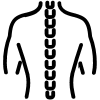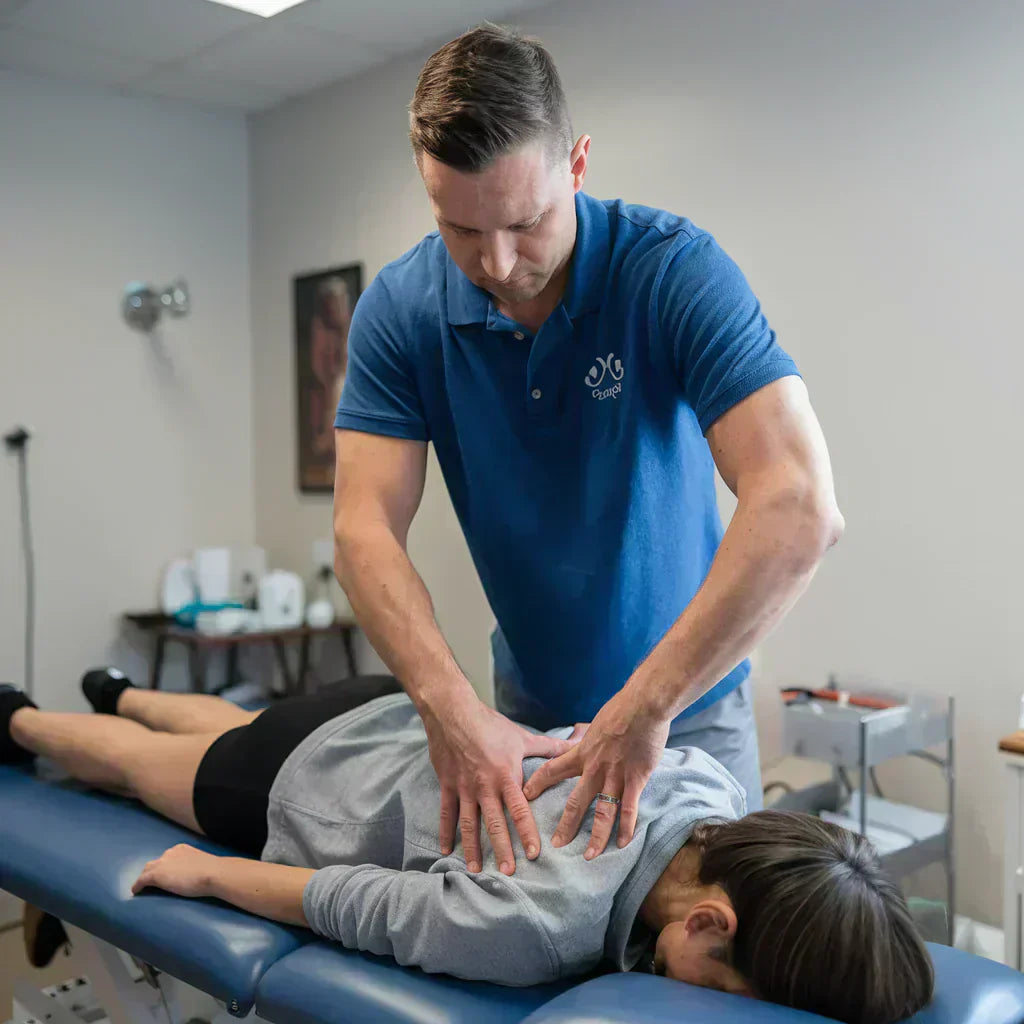What is osteopathy?
Osteopathy is a therapy that focuses on identifying and treating mobility restrictions that can affect all the structures that make up the human body.
One of these basic principles is: 'Life is movement.'
An osteopath will work to restore movement to your entire body.
What is an osteopath?
It is a holistic manual practice based on the body's ability to self-balance. Sometimes, we lose mobility in our joints, muscles, ligaments, or viscera, which can cause imbalance and thus the appearance of pain or other symptoms.
It is often the consequence of stress, most often mechanical (repeated inadequate movements, trauma, surgical after-effects) or emotional.
As Andrew Taylor Still, the founder of osteopathy, said: "The human body is particularly intelligent, it is constantly looking for a way to avoid constraints and pain." To do this, it will put in place compensation systems so that daily comfort is ensured.
When the constraints are too strong or too numerous, this creates a favorable environment for the appearance of pain or even pathologies.

When should you consult an osteopath?
It is important to consult an osteopath at least once a year, even if there is no pain, in order to prevent their appearance.
How does an osteopathy session take place?
During this consultation, several steps will lead the osteopath to determine the best possible treatment:
- The anamnesis:
The osteopath will ask you a series of questions in order to identify the reason for the consultation, understand the characteristics of the pain as well as all the signs associated with it.
He is particularly interested in the ways in which pain appears and puts it into perspective in the chronology of the patient's medical history. He takes stock of the functioning of the body's different systems (nervous, ENT, cardiopulmonary, digestive, urinary, etc.) and inquires about the patient's personal and family history.
He will also ask the patient about their lifestyle habits (dietary hygiene, sports, work positions, stress factors, etc.).
- The clinical examination:
It includes visual observation of the patient and the painful area.
Depending on the reason for the consultation, the osteopath may be required to perform palpation tests known as exclusion tests in order to rule out any causes outside of their scope of practice. This is called a diagnosis of exclusion.
- Osteopathic diagnosis:
Using specific palpation tests, the osteopath explores the body in search of areas that present movement restrictions likely to affect the state of health.
The location of the restricted areas may appear at a distance from the painful area.
- Osteopathic treatment:
Treatment is implemented based on the diagnosis made beforehand.
The osteopath may be called upon to treat different structures: joints, muscles, ligaments, viscera, fascia. He chooses the most suitable and comfortable technique for each patient, depending on their age and morphology, the area of the body to be corrected, and the need for the dysfunction.
- Tips:
They will be given by the osteopath in order to have a global approach and thus avoid the onset or recurrence of pain.
This part of the consultation constitutes an essential aspect of the long-term success of osteopathic and curative treatment.
Why consult an osteopath?
Osteopathy can treat a patient from birth to the end of their life. In practice, everyone can benefit from osteopathic treatment, whether they are athletic, sedentary, young or old. The indications for osteopathic treatment are very broad:
- On the musculoskeletal system: sprains, tendonitis, lower back pain, back pain, neck pain, joint pain, functional pain or pain of rheumatic origin.
- On the neurological system: cervical-brachial, intercostal, facial, Arnold's neuralgia, cruralgia, sciatica.
- On the cardiovascular system: circulatory disorders of the lower limbs, venous congestion, hemorrhoids.
- On the digestive system: bloating, hiatal hernia, hepatobiliary disorders, colitis, constipation, difficult digestion, gastric acidity.
- On the ENT and pulmonary system: rhinitis, sinusitis, dizziness, ringing in the ears, headaches, migraines, bronchitis, asthma, bronchiolitis.
- On the autonomic nervous system: depressive states, nervousness, anxiety, stress, sleep disorders, spasmophilia.
- On the after-effects of trauma: fractures, sprains, falls, accidents.
To conclude, the osteopath has all the expertise to welcome you to the office in order to provide a solution to a very wide range of consultation reasons.
Whether through their own practice or by referring you to another healthcare professional, they will also be able to integrate into a multi-professional team if necessary.
The best advice is to consult as soon as possible as soon as symptoms appear :) The osteopath is a health professional, you do not need a medical prescription to consult one.













